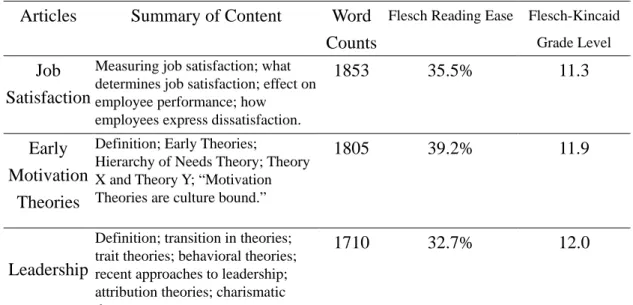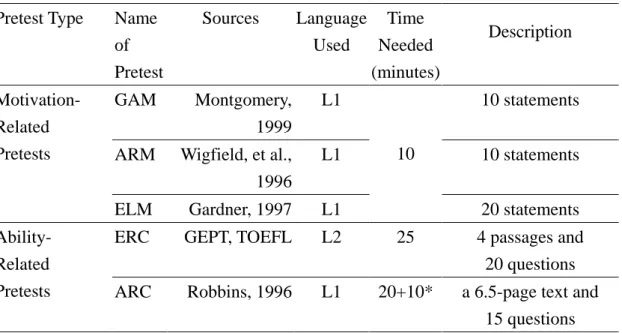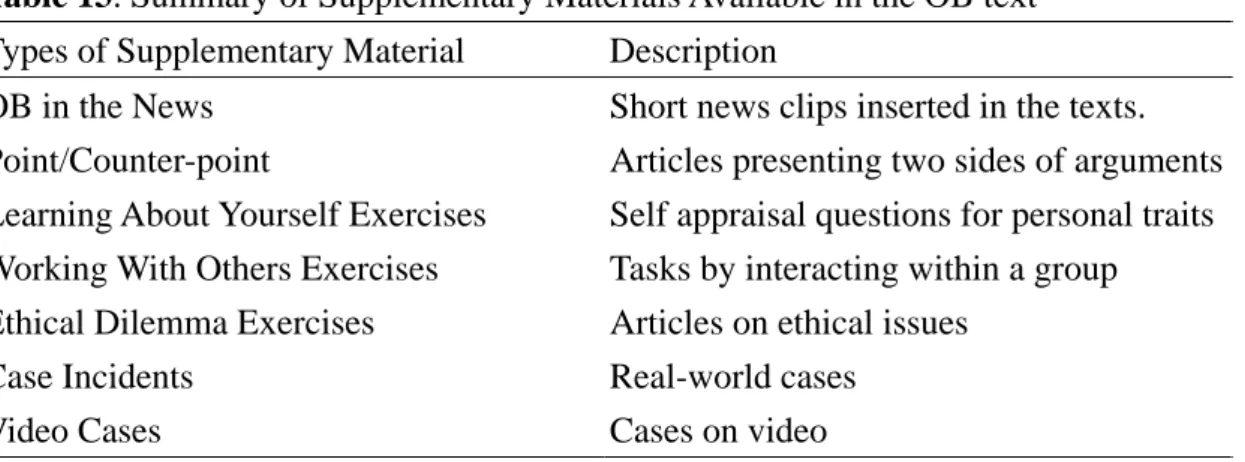CHAPTER THREE METHODS
In order to answer research questions outlined in Chapter One, three different pre-reading treatments were designed to accompany each of the three reading units. The treatments of (1) Vocabulary List, (2) Self Appraisal, and (3) Case Study were compared to investigate the effects of a traditional cognition-oriented approach (Vocabulary List) versus two alternative attention-arousal strategies (Self Appraisal and Case Study). In this chapter, I will discuss the participants, the selection and adaptation of reading materials, research design, data collection procedure, instrumentation, scoring of variables, and data analysis procedures.
Participants
A total of 183 college students from two school sites in northern Taiwan participated in the experiment. Due to administrative constraints, this study used convenience sampling.
One hundred and eight of these participants were junior and senior
1International Trade majors from a private university of science and technology (Site A) where the researcher worked and 75 were college freshmen from the school of management at a national university (Site B) that the researcher had access to. Participants from Site A were 104 females and 4 males enrolled in the course of Business English and those from Site B were 48 females and 27 males enrolled in Freshmen English in the spring semester of 2002. The majority of students in Site A were females while males accounted for about one-third of the student population in Site B. The proportion of females to males sampled in this study adequately reflected the gender proportion of the two respective sites. All participants had received at least three years of formal English education in junior high schools and another three years in
1





